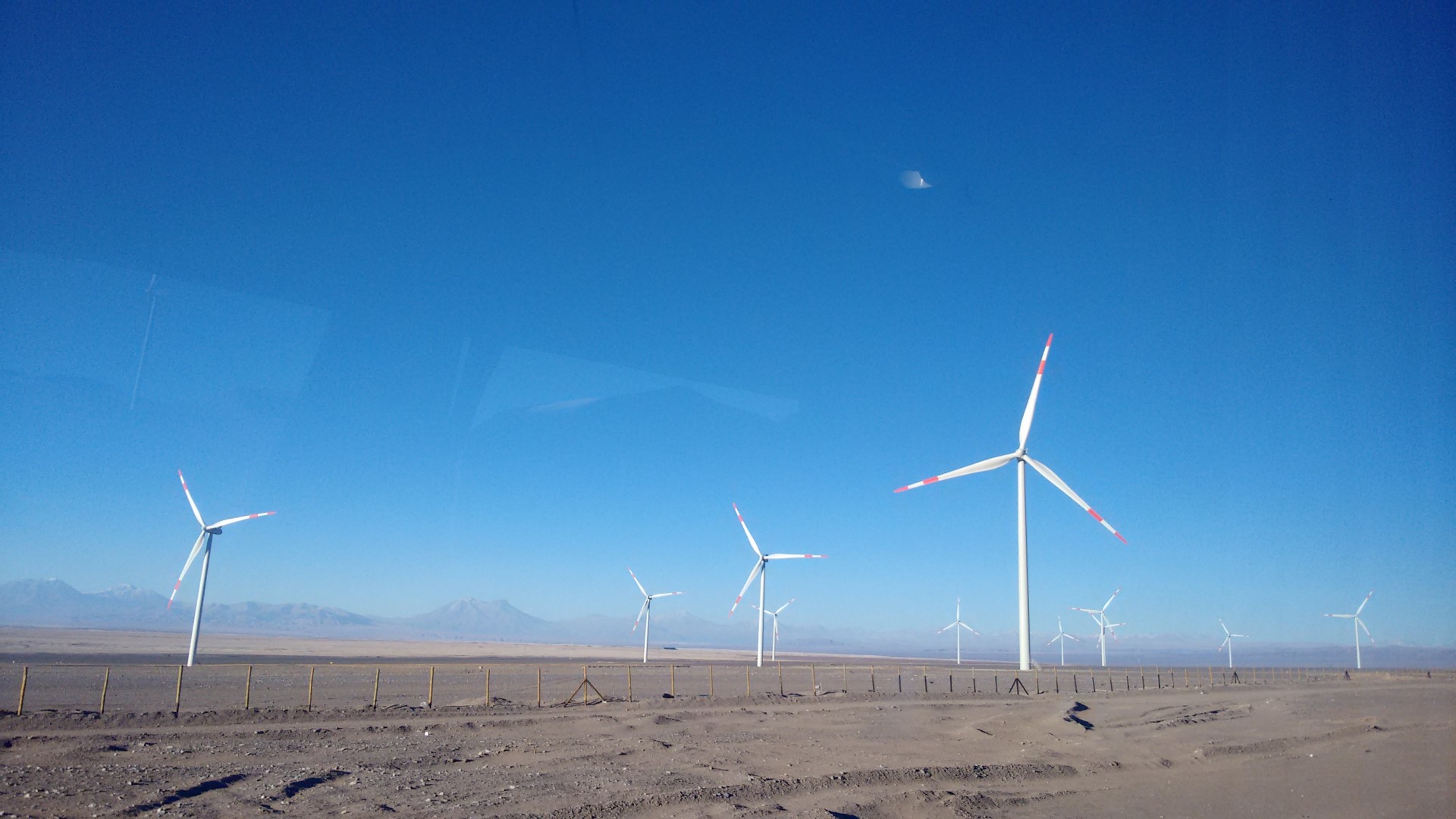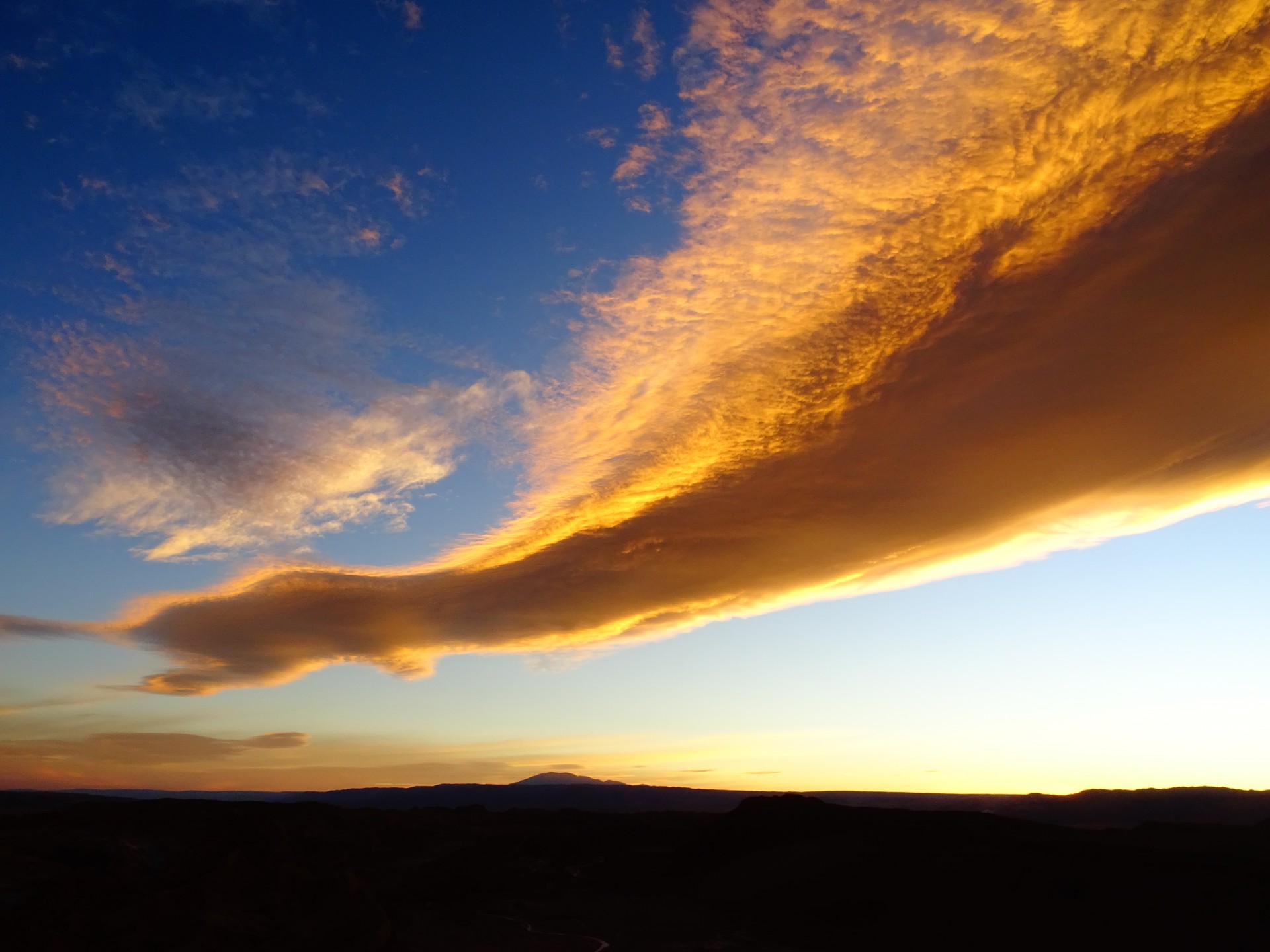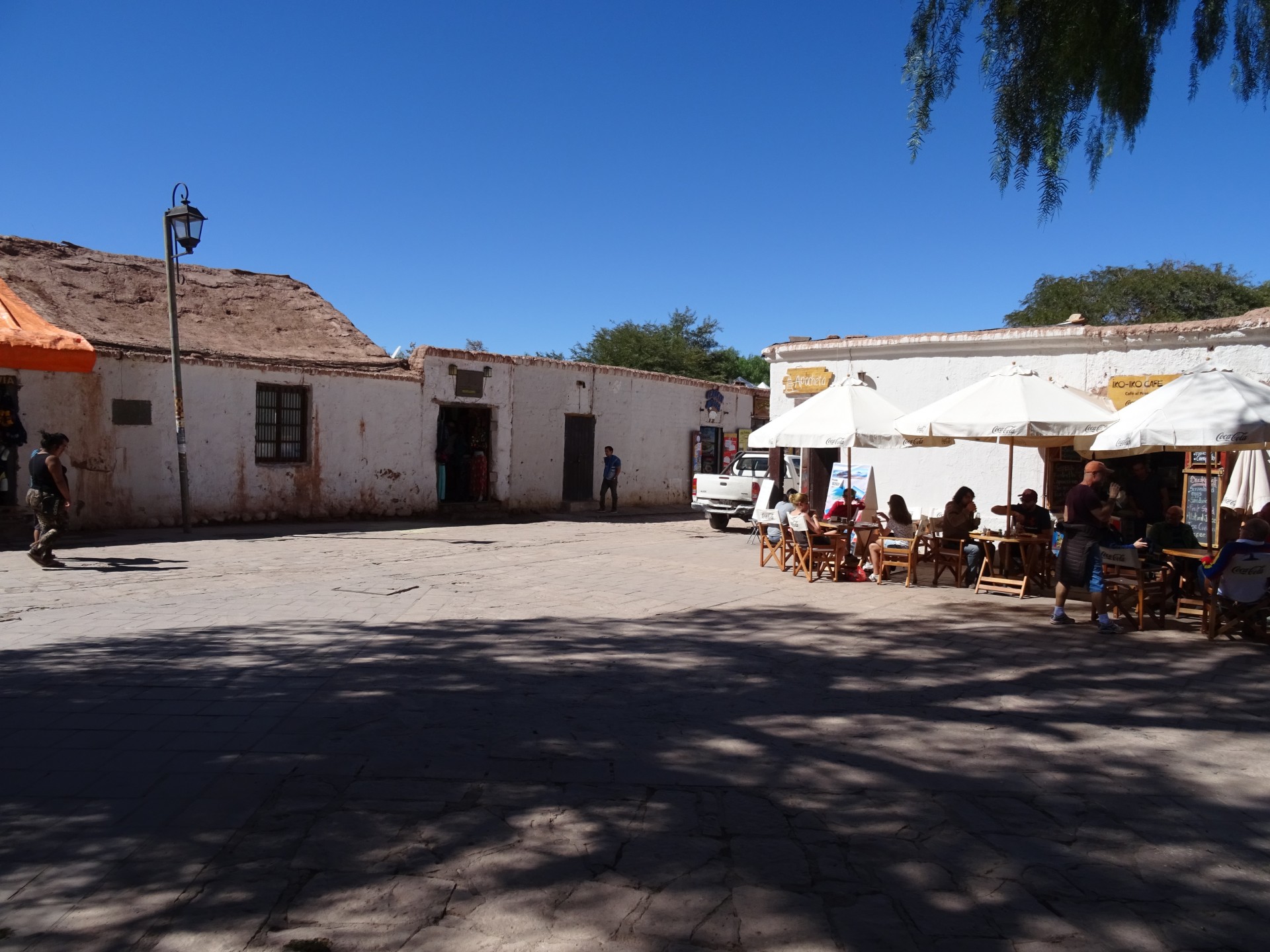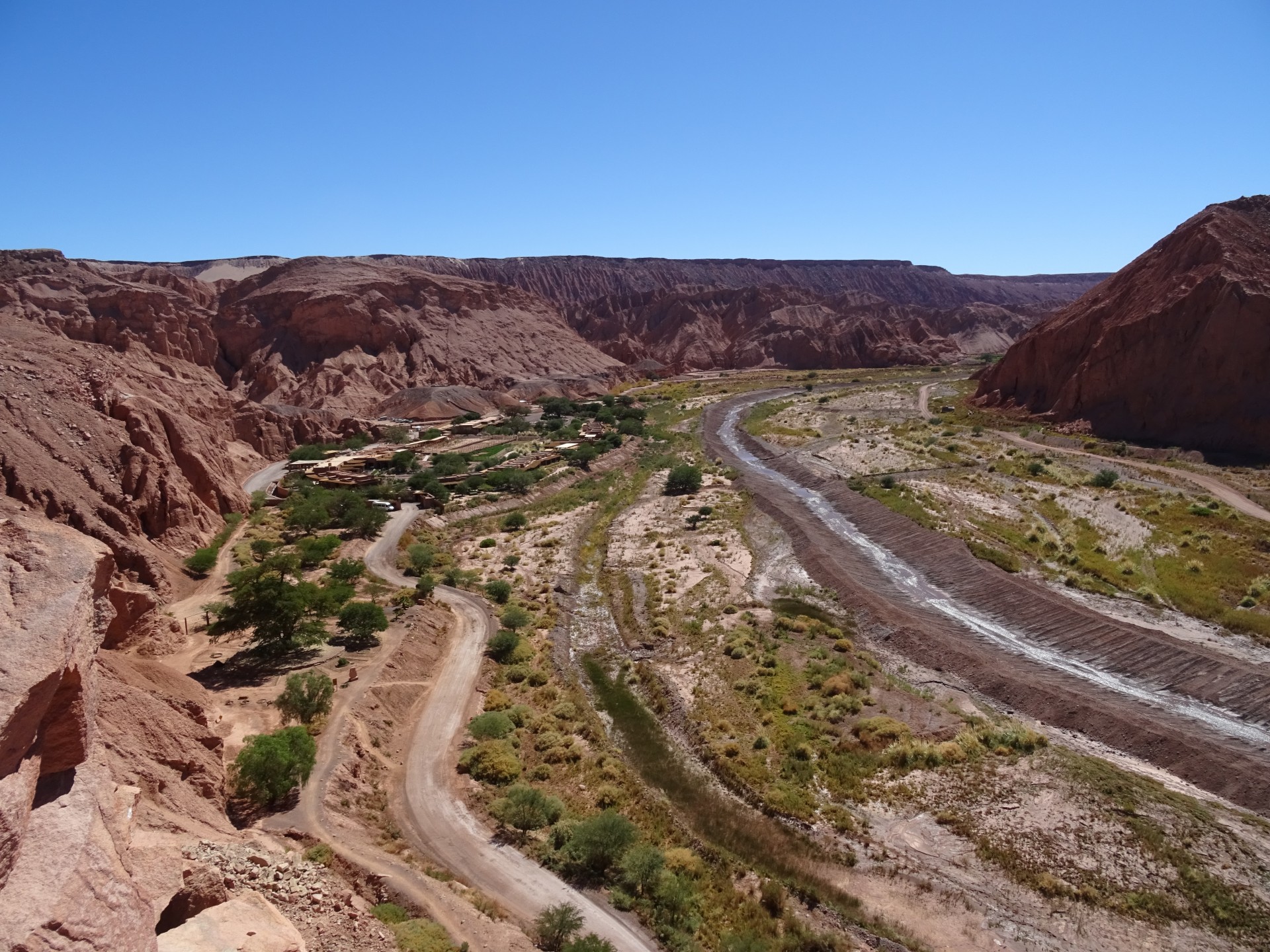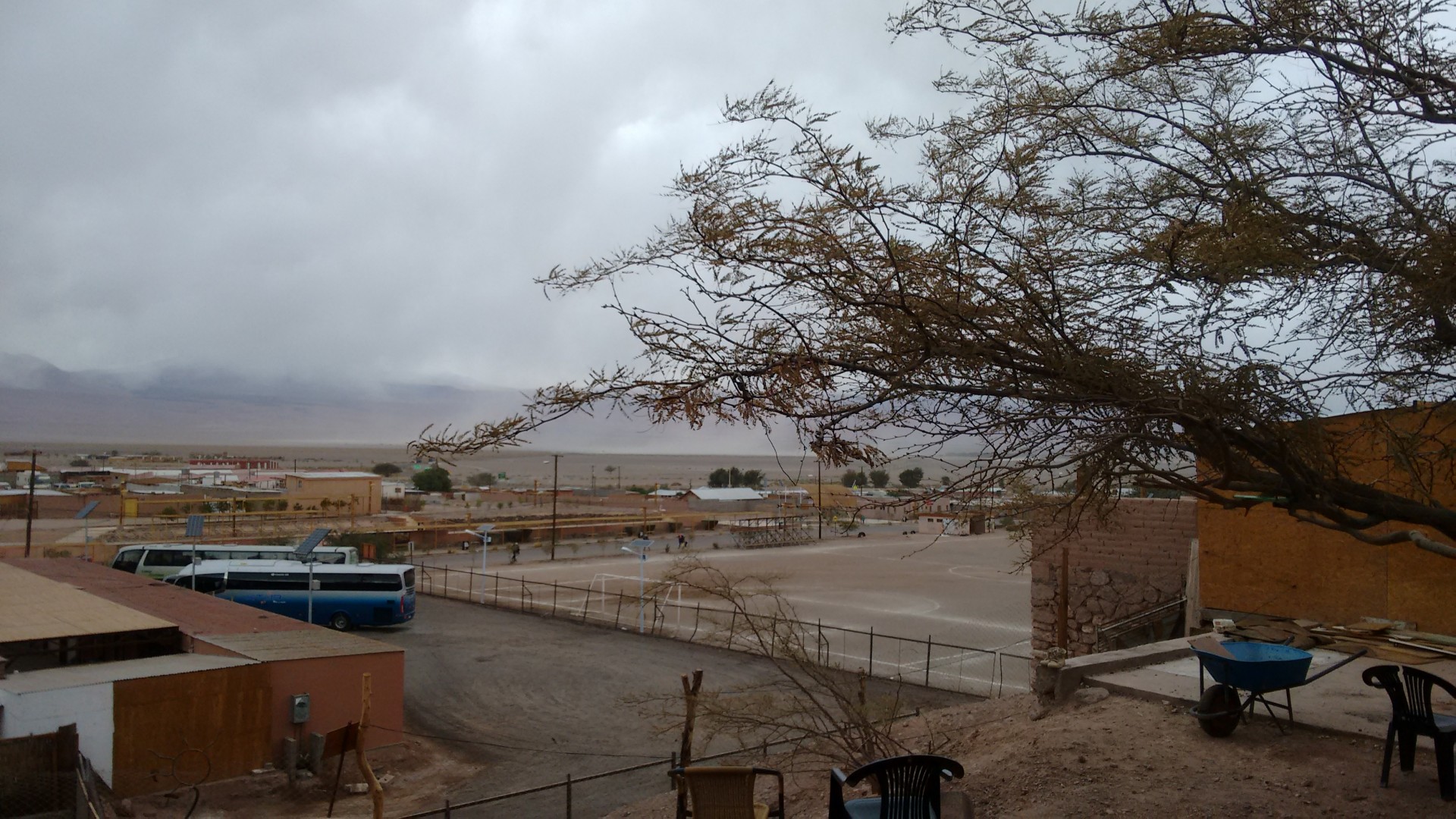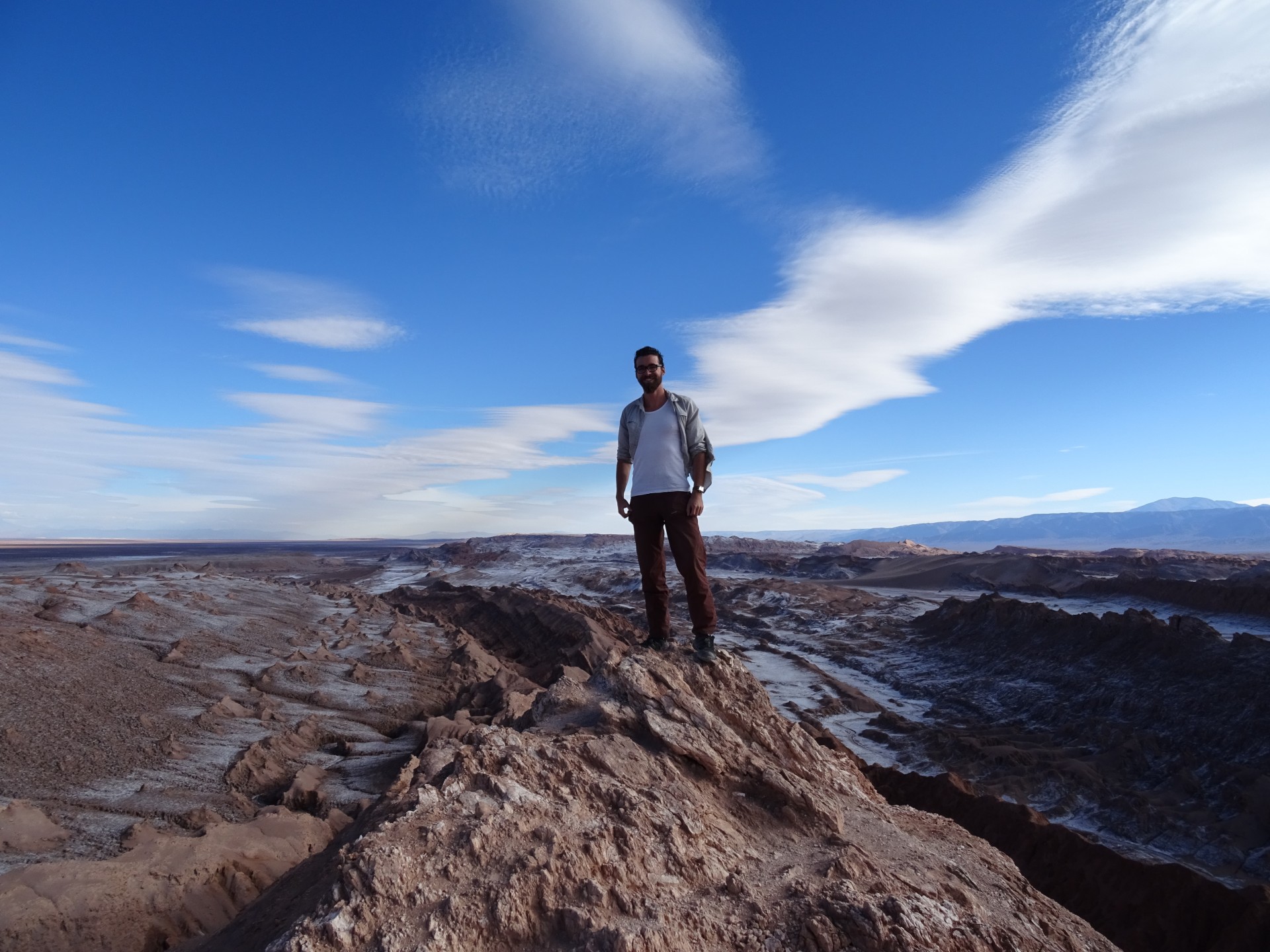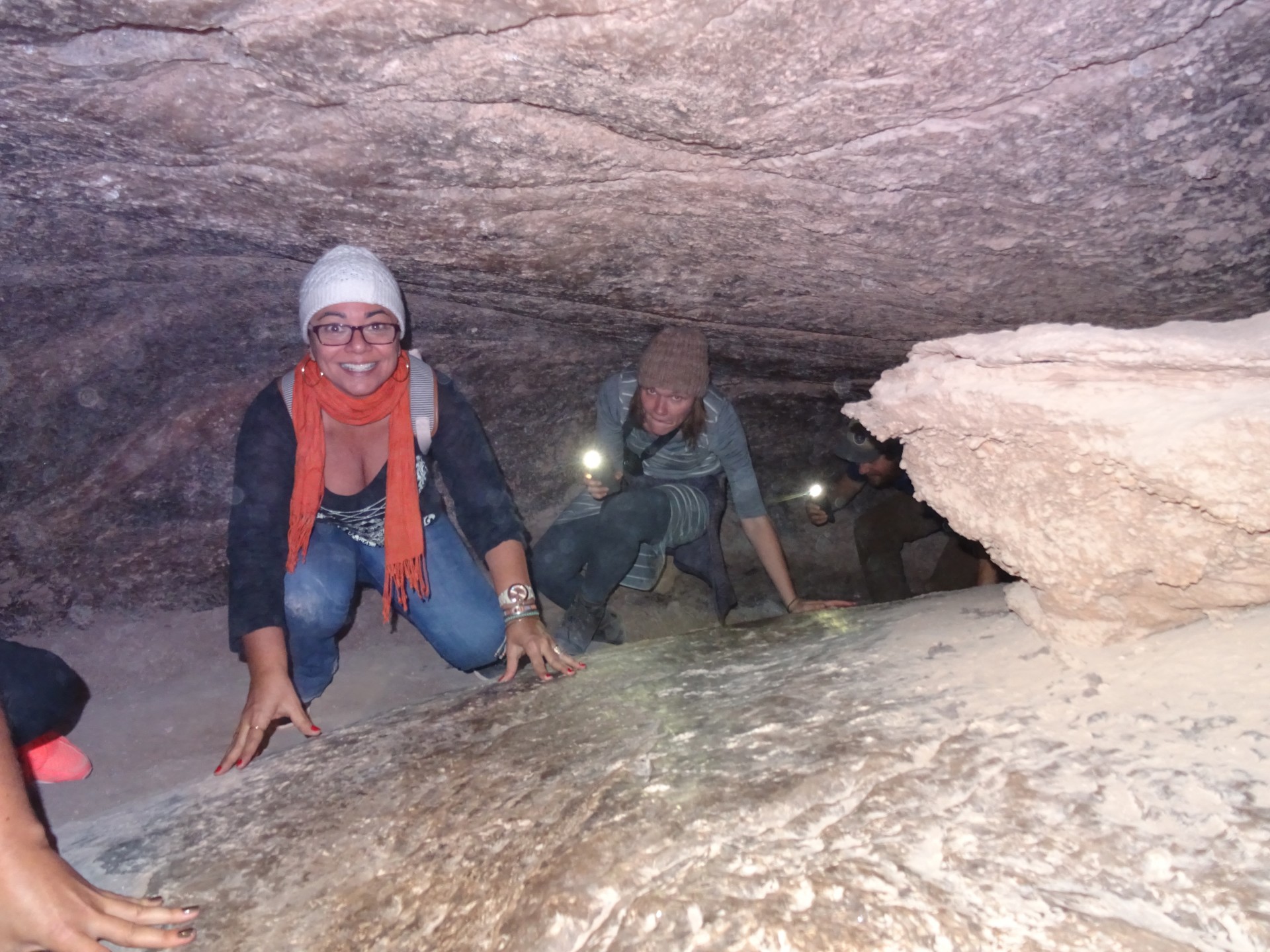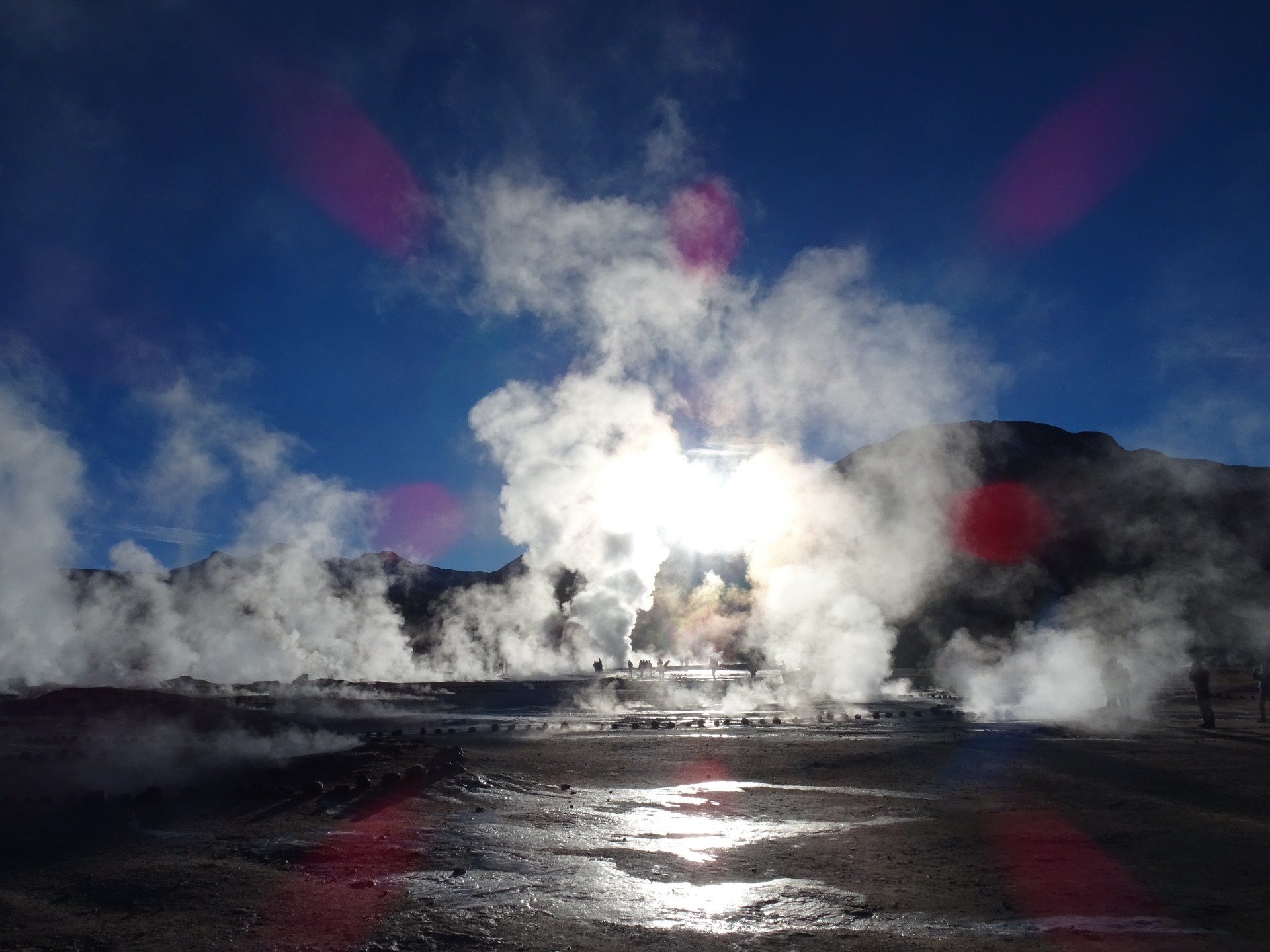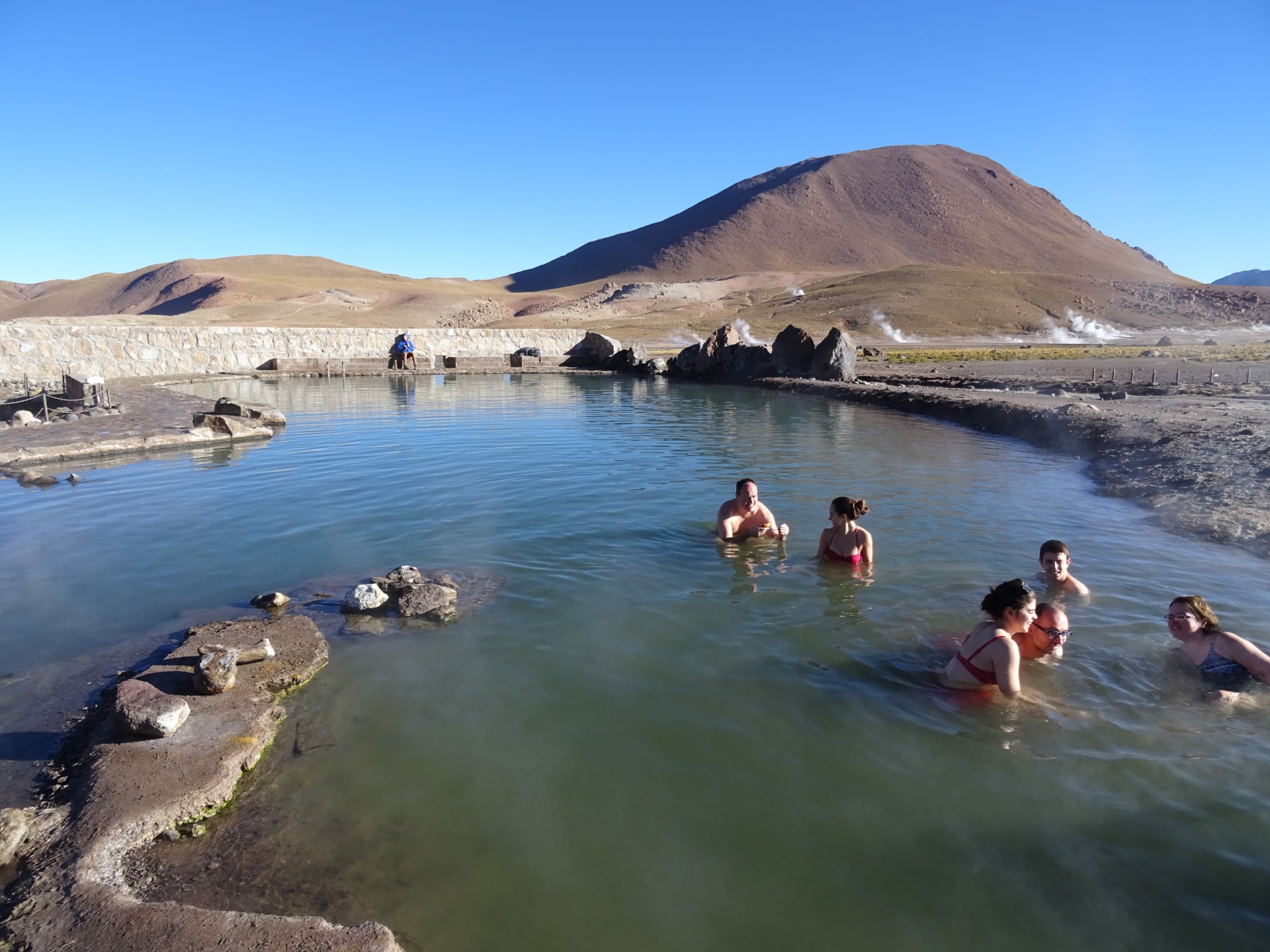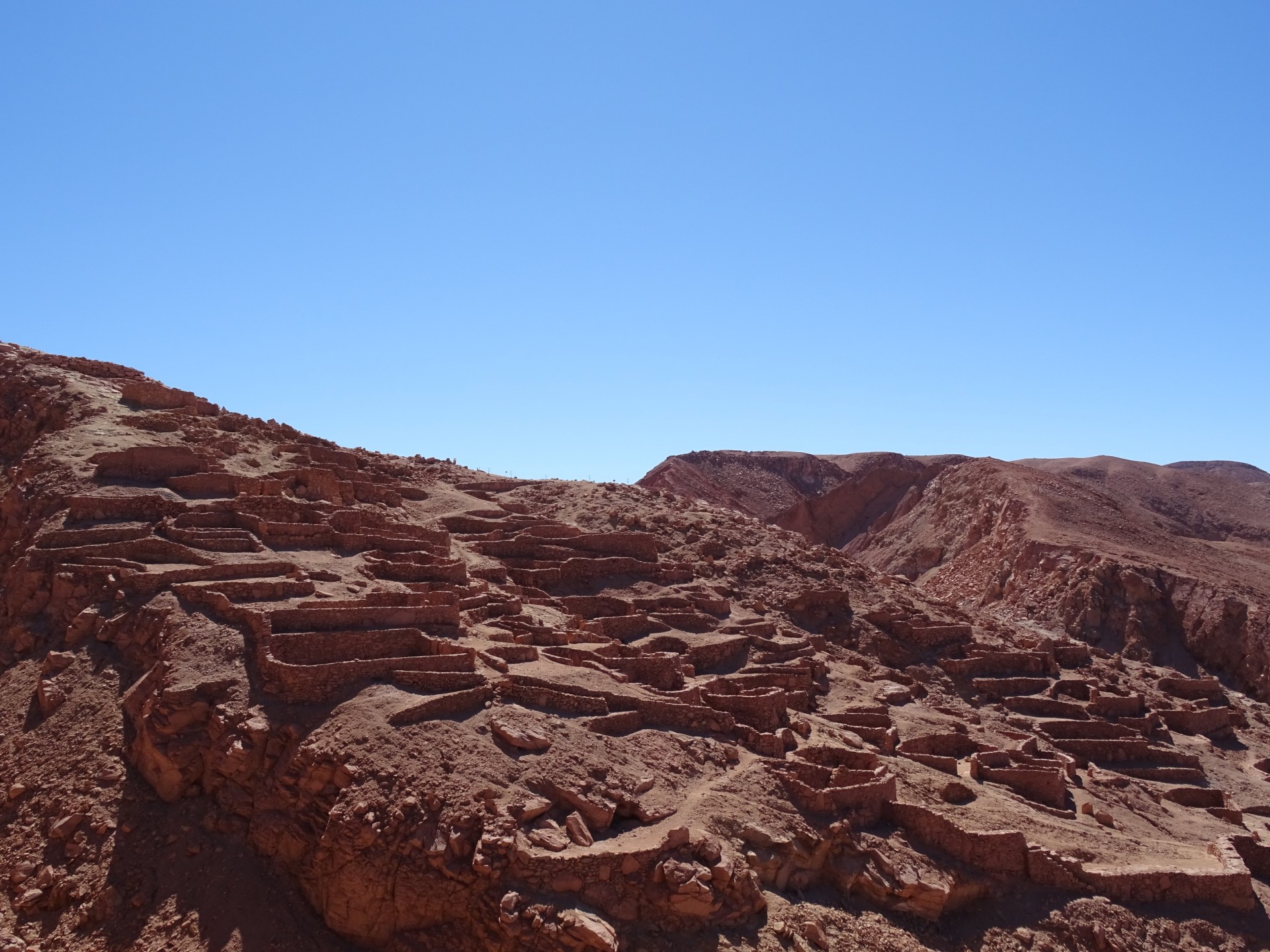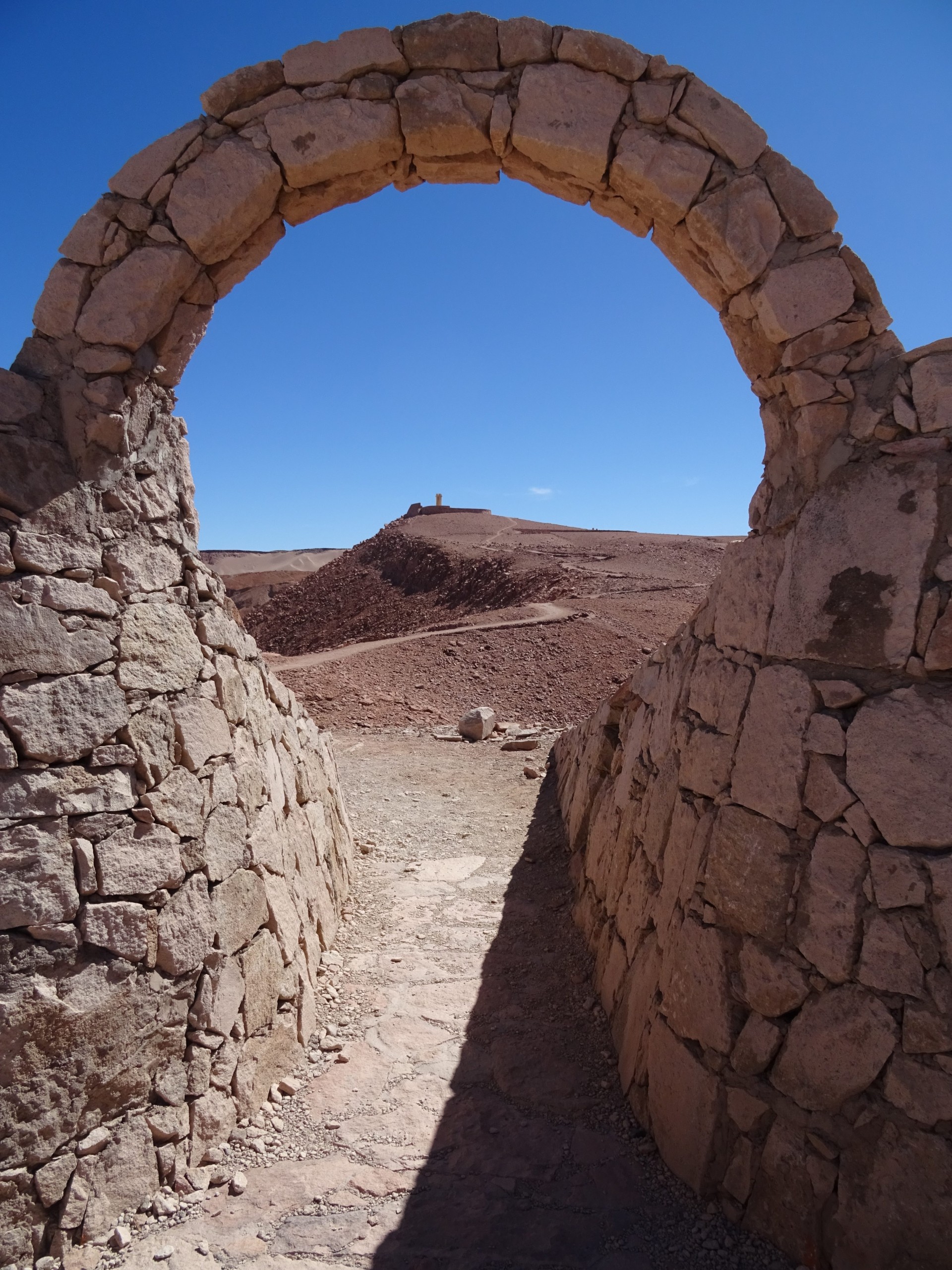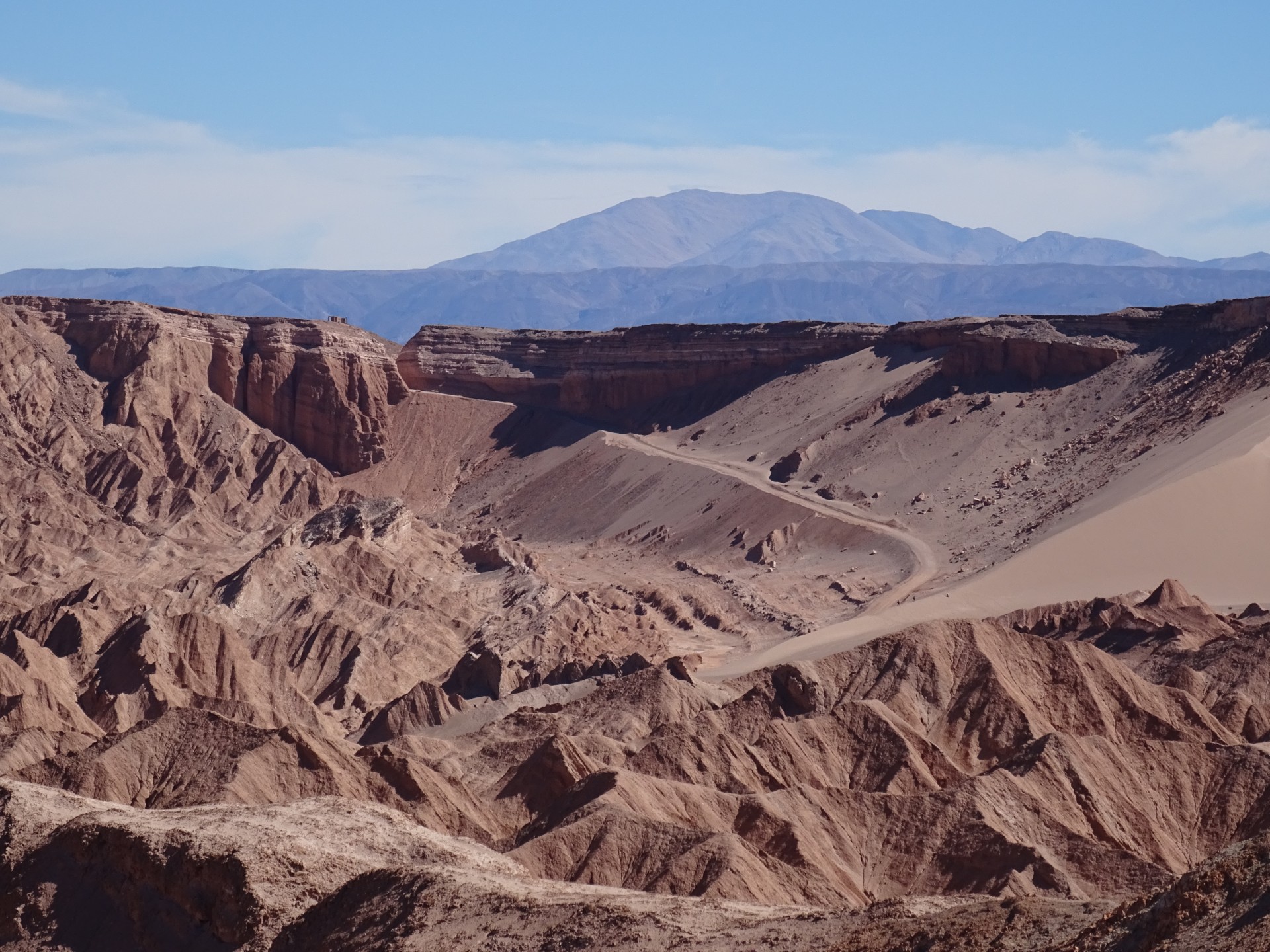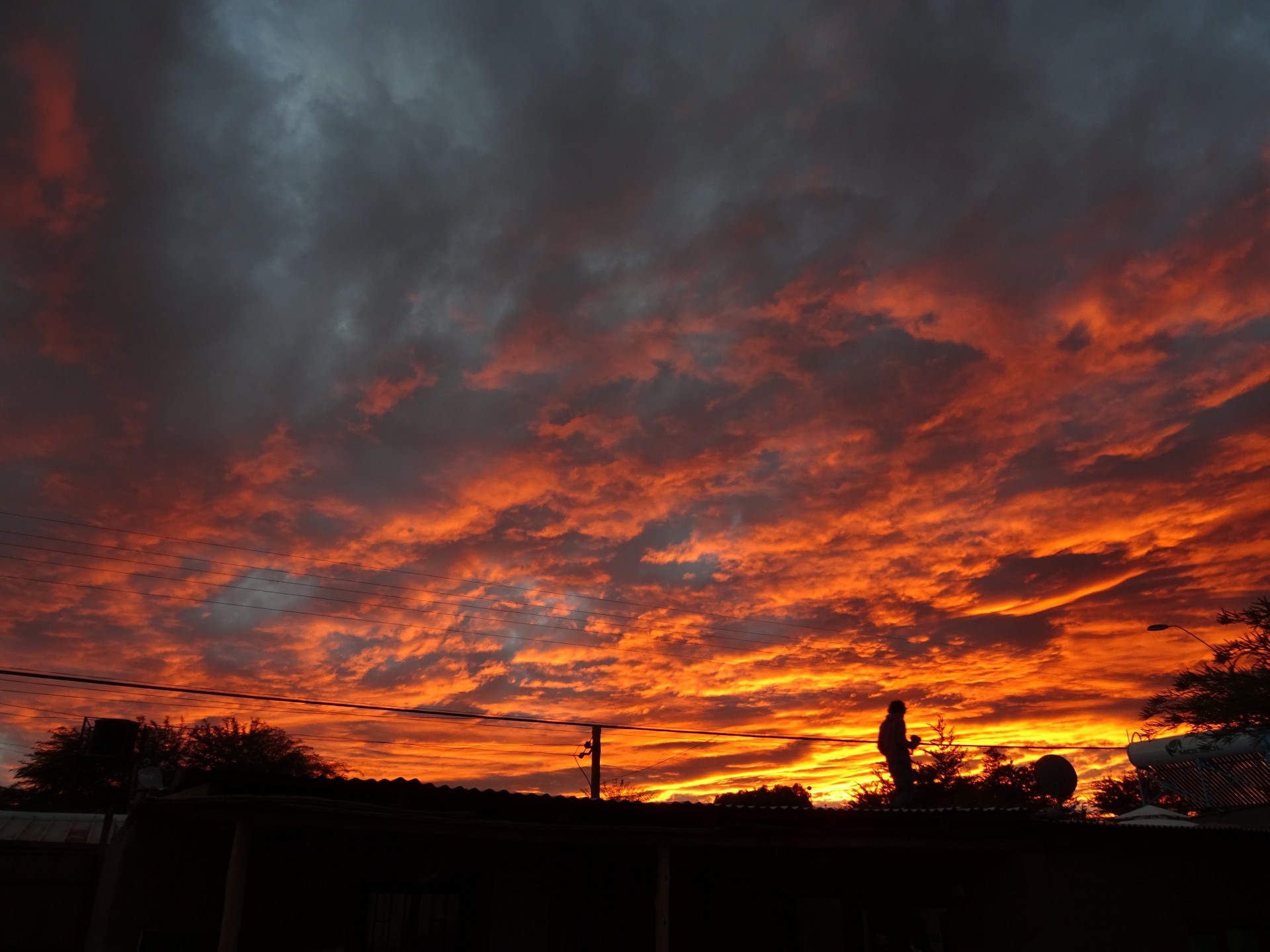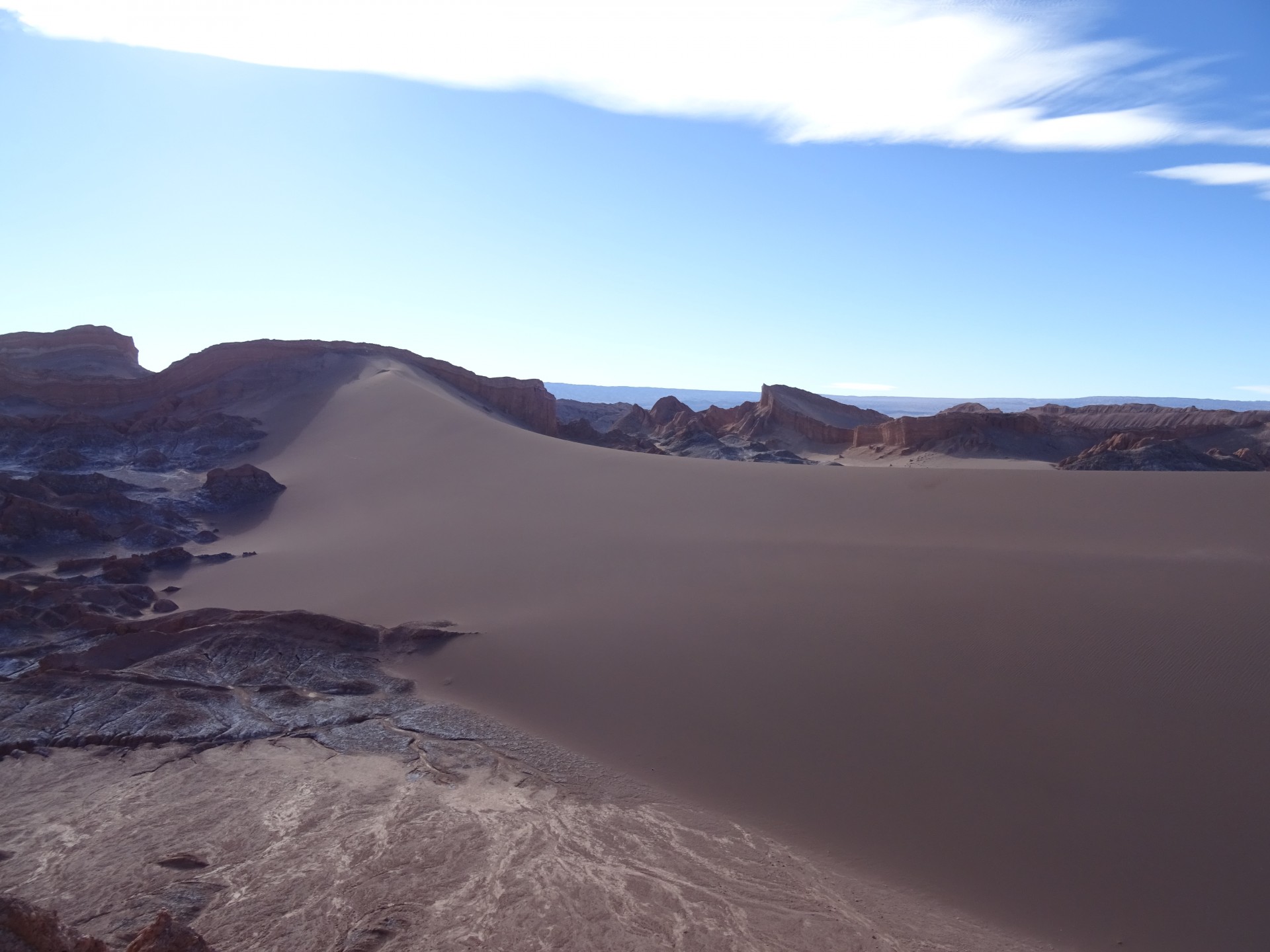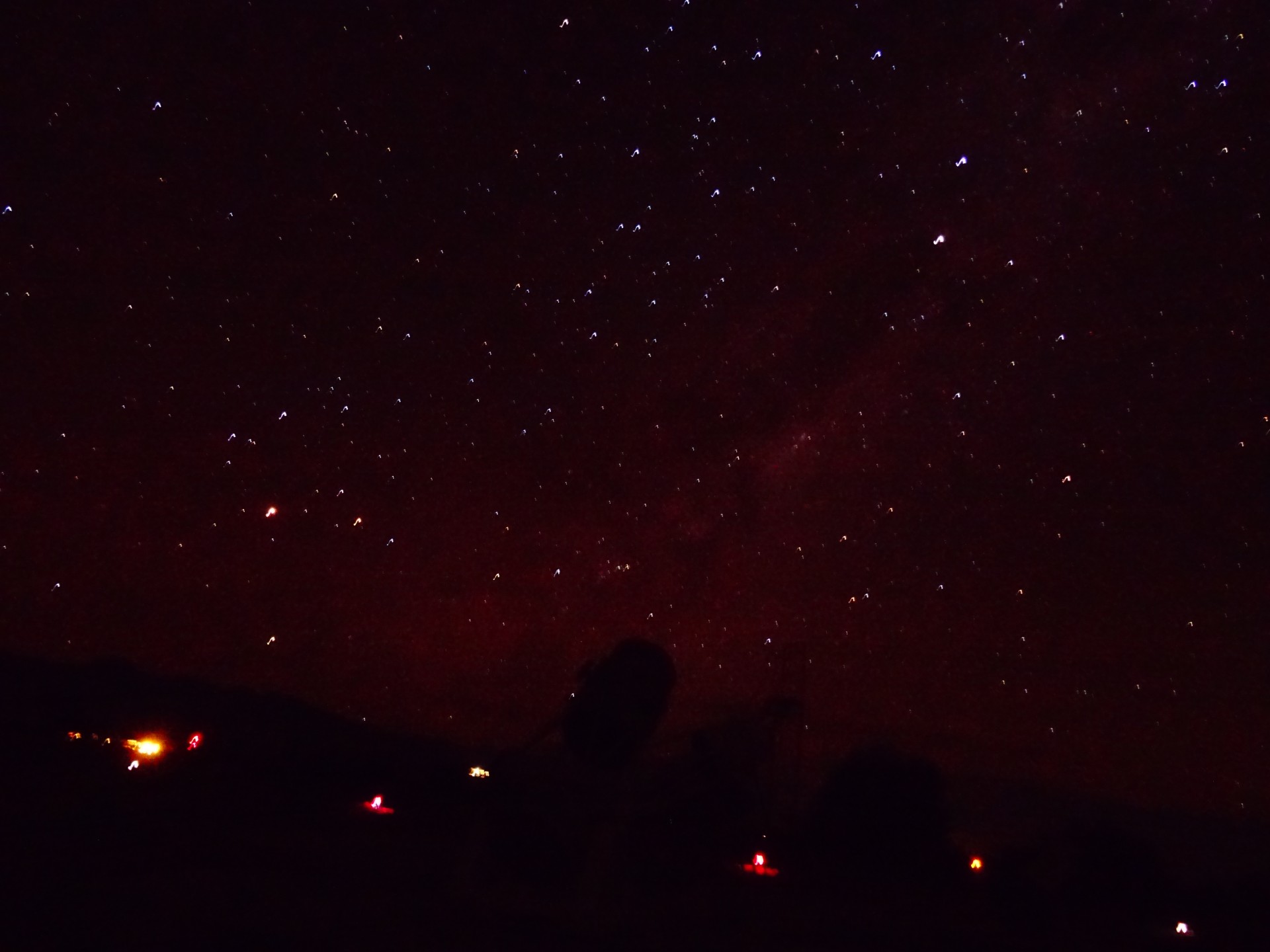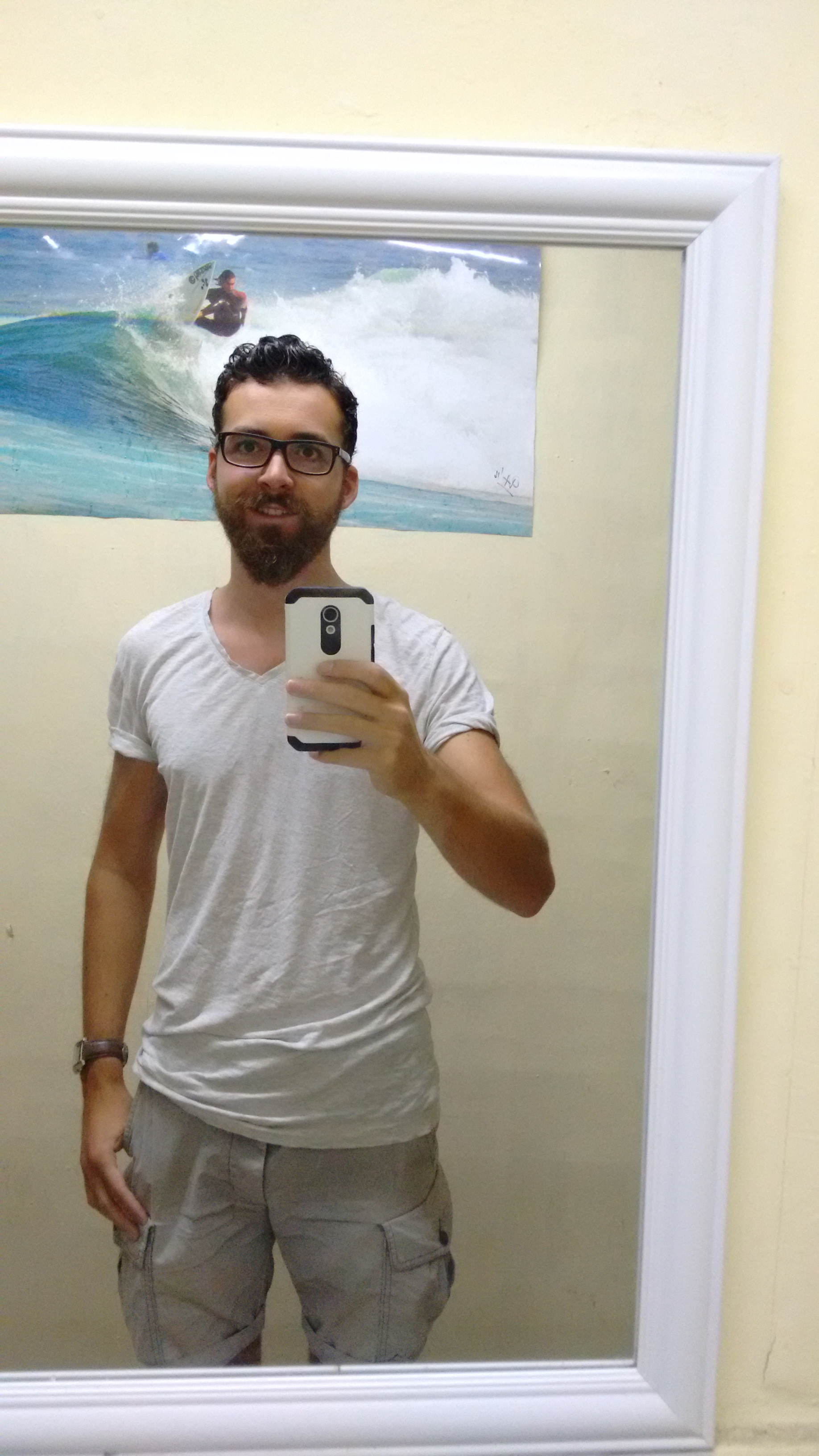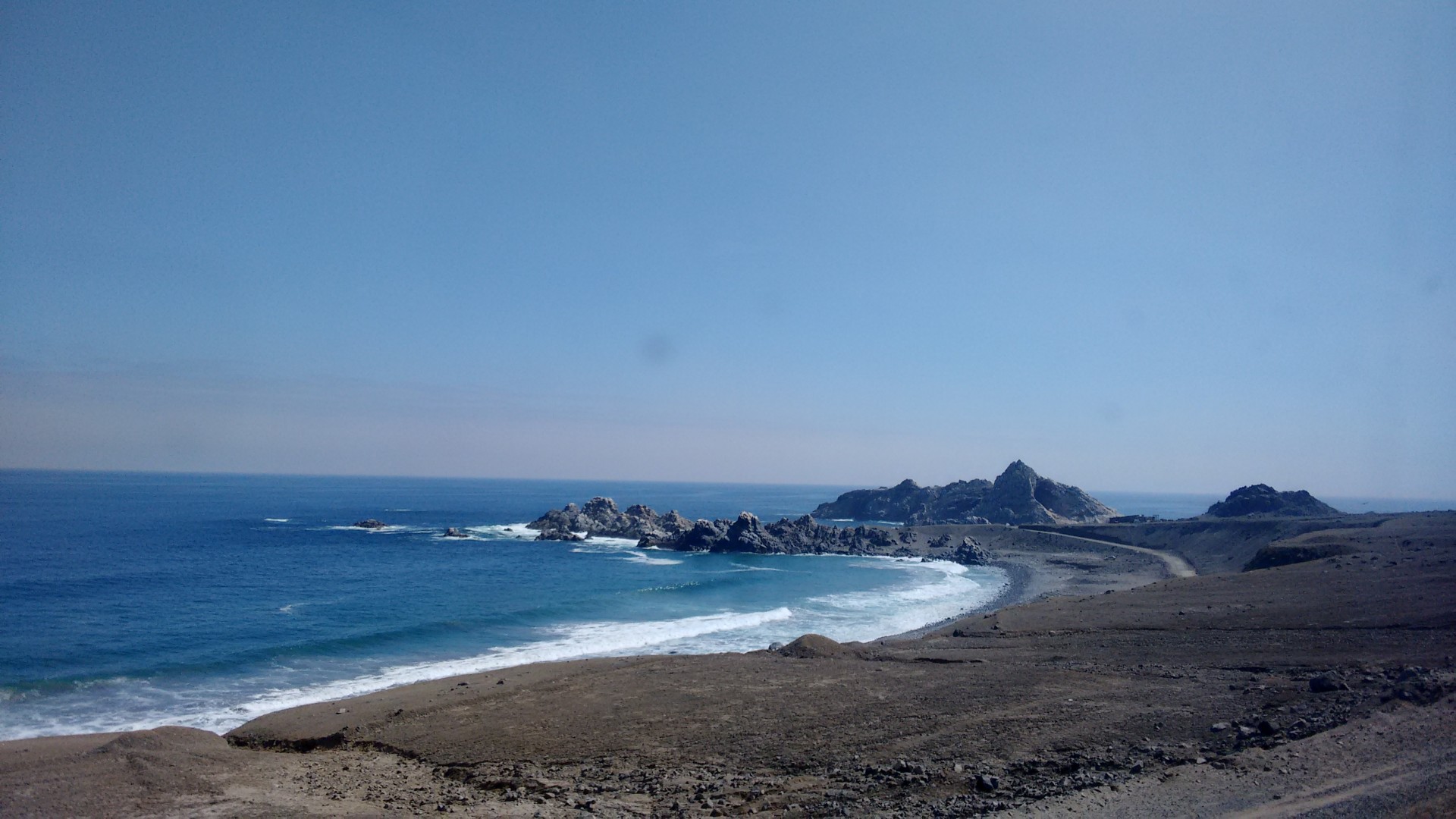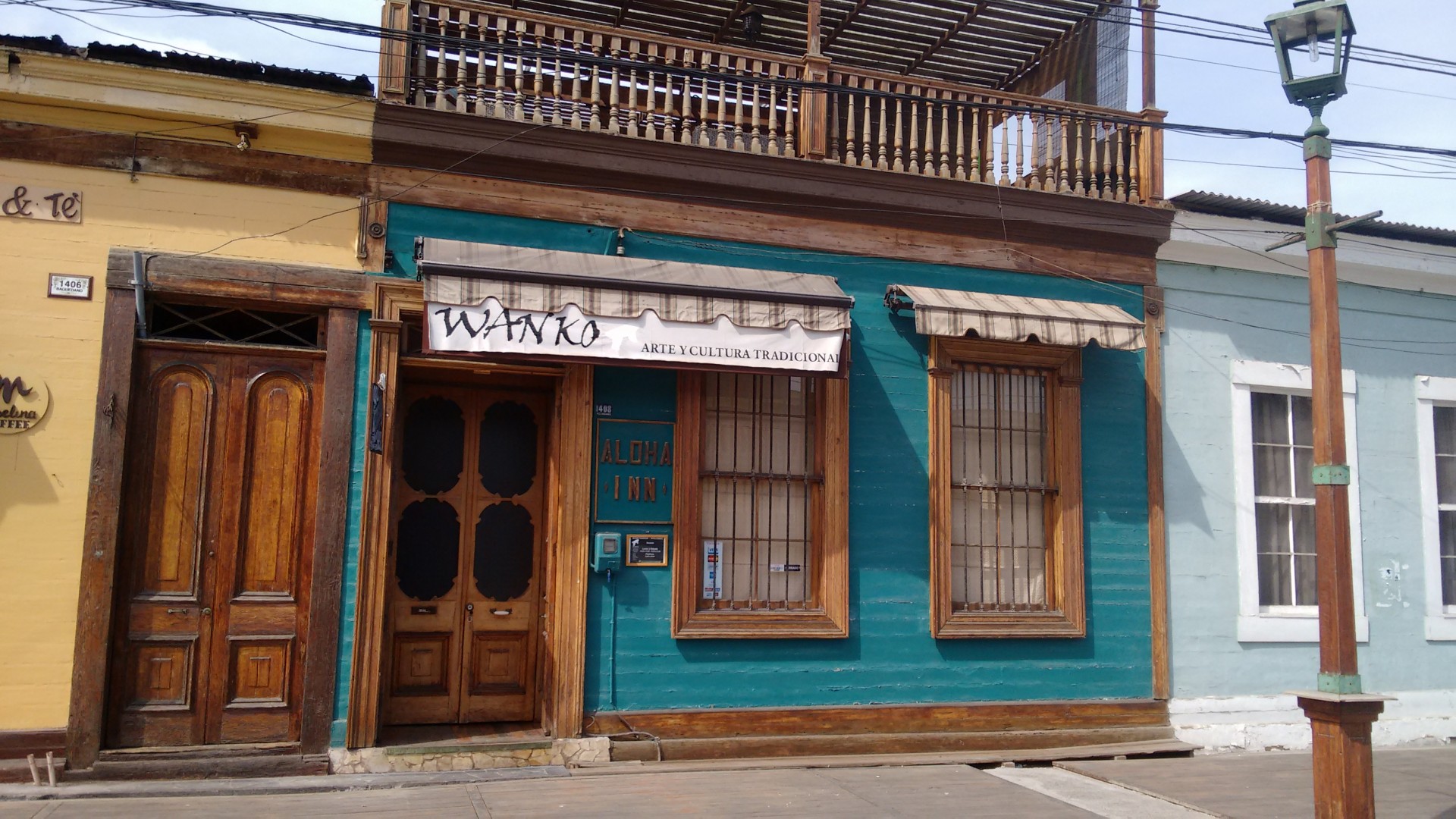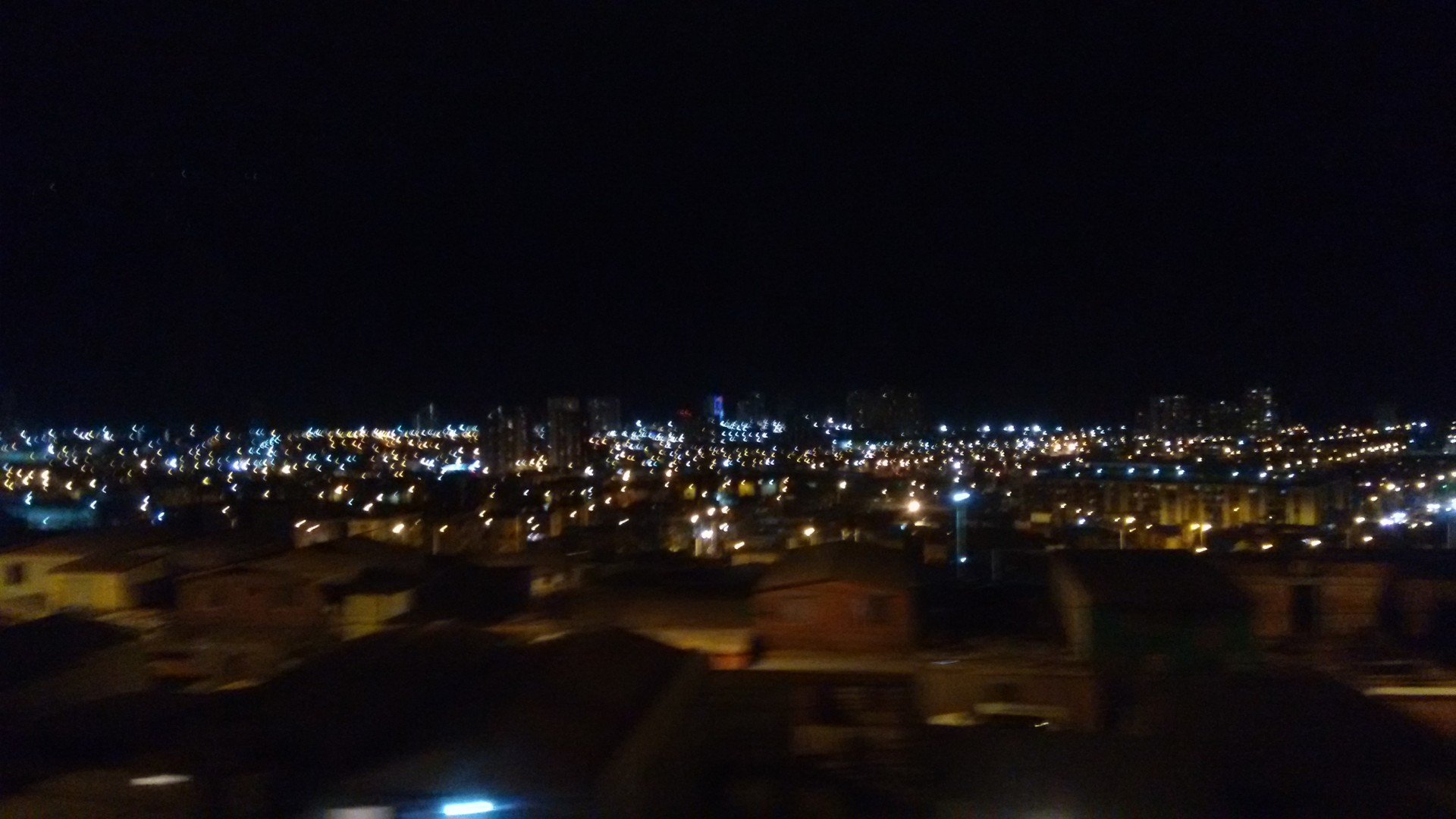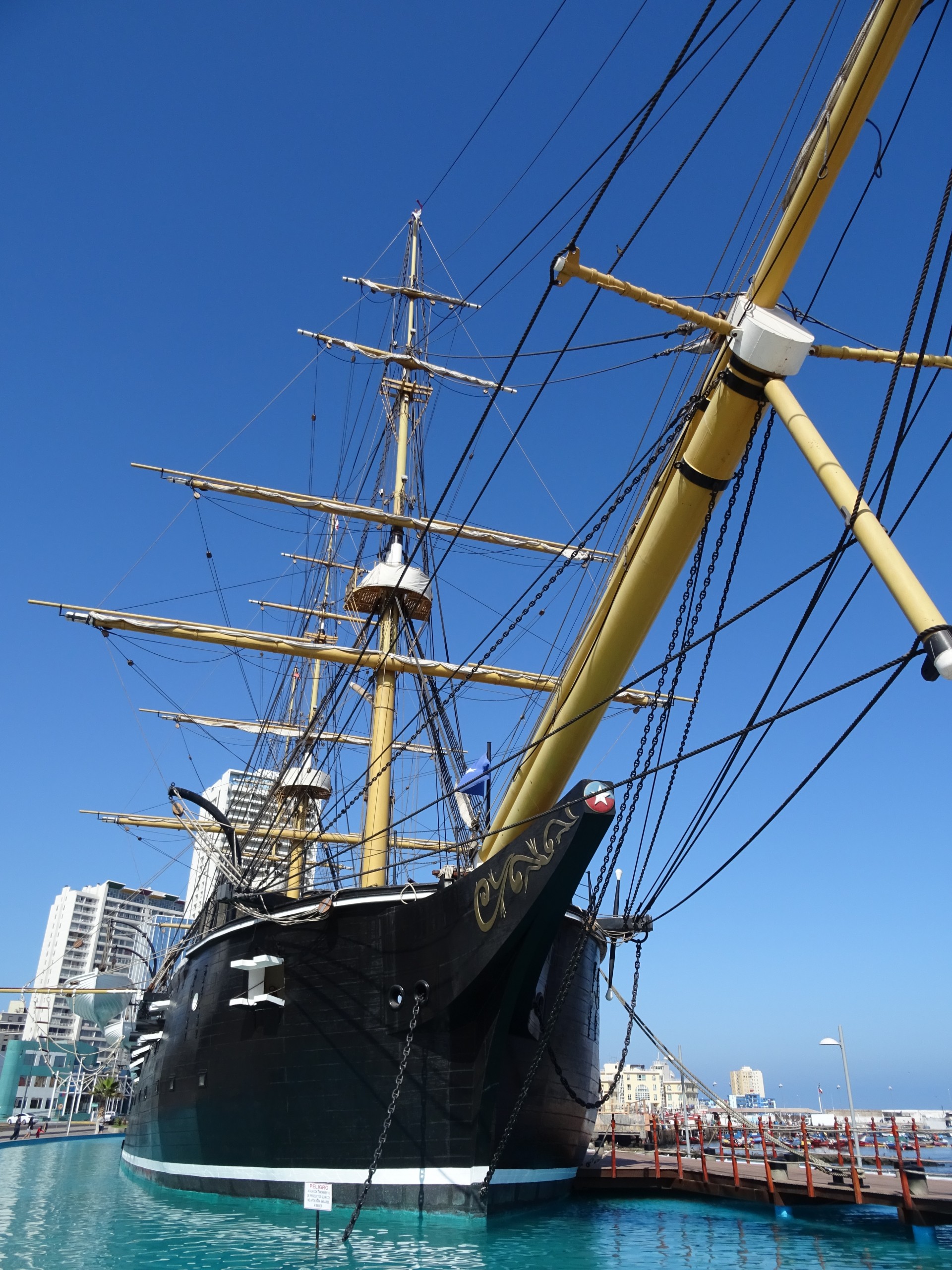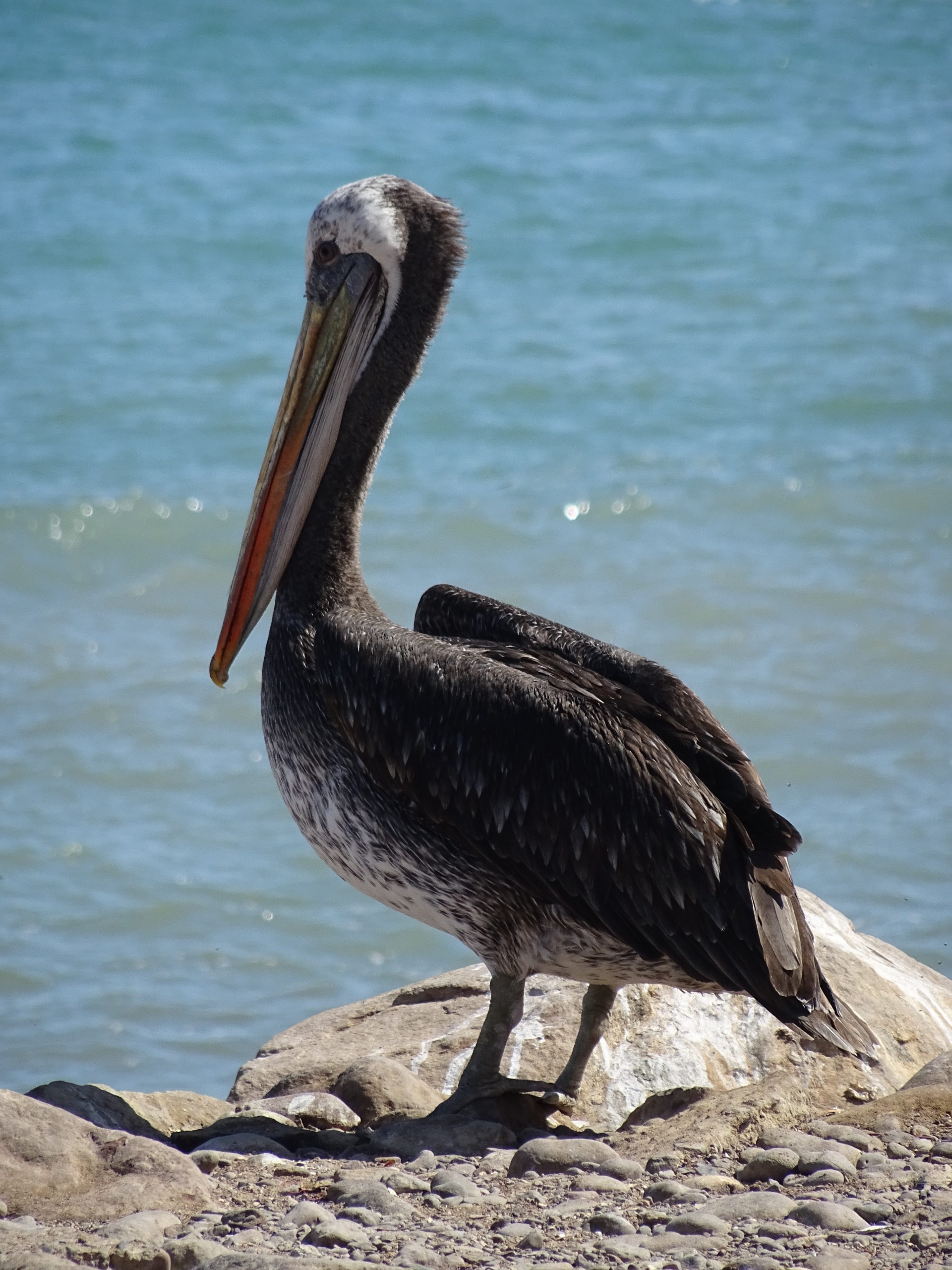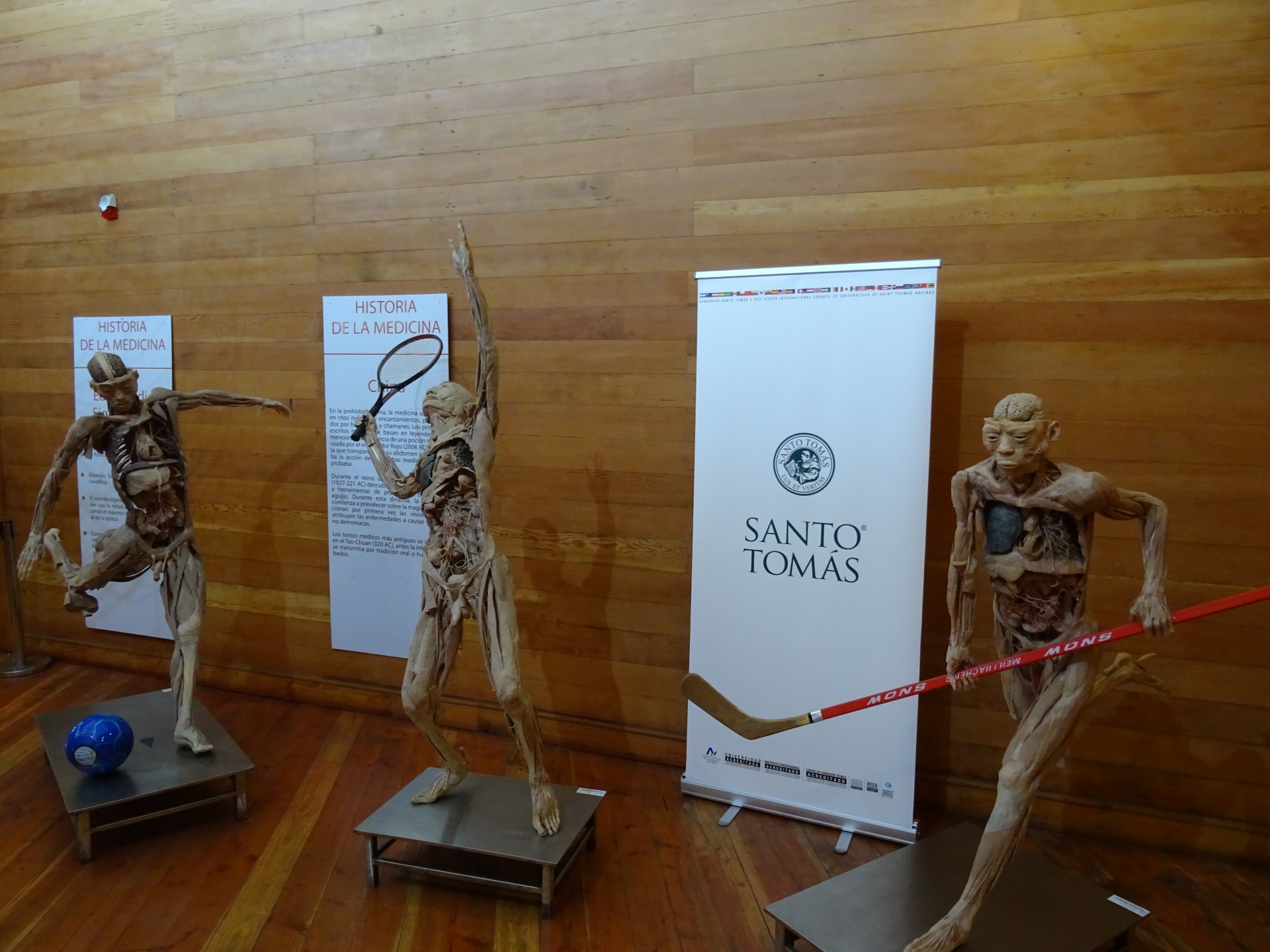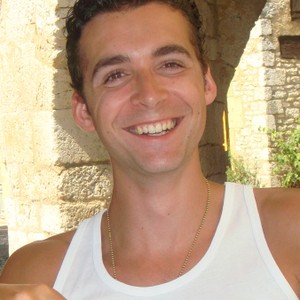Friday 29th April 2016 –
I lied. I’m sorry. I retract the statement. Remember when I declared Pucón the most touristy of little Chilean tourist towns? Well, it’s not. That honour, without a shadow of a doubt, belongs to San Pedro de Atacama. Before I talk too much about it though, it’s back to Antofagasta we go.
Last I left, my Chilean friends of about an hour had dropped me off in the centre of this busy city. Charm isn’t present in spades, it largely being an industrial city, so it wasn’t long before I was sat at the bus station, waiting for a bus to San Pedro. Said bus then took me on the relatively meagre six hour journey through desert, desert and more barren wasteland desert. Honestly, you could use this sort of setting for a Fallout game.
As I’d not know when I was going to arrive, I’d not booked anywhere to stay, and upon my 8 o’clock arrival, I was not looking forward to a hunt for a hostel with space. As luck would have it though, two minutes from the bus station and struggling with a bag with a broken strap, I bumped into two French cousins (of each other, not me, to clarify) who I’d met on the pisco tour in Pisco Elqui. They were sure their hostel would have space, and so it did. Before you wonder why this is interesting though, I’ll explain – this is just the first example of the phenomenon known as BACKPACONGREGATION. Yes, I just thought of that on the spot. No, it’s not a real word. So many arrive here, it is inevitable that it is inevitable you will meet someone you know. I bumped into no less than five groups of people who I’d met before.
Despite this, San Pedro remains a sweet town, and genuine year round residents do exist, even if they are outnumber 20:1. It’s quite picturesque too, especially for a town sat in the middle of the desert. A meagre 4000 inhabitants, the rough adobe walls and small plaza signify the biggest population centre within 50 miles. It’s a real life oasis in the desert.
For some reason, it actually rained while I was there. As evening approached on the first night, it started to dribble down, if only for a few minutes. In the driest desert in the world, I witnessed it rain.
It wasn’t long before I found myself something to do – interesting areas are ten to the dozen here. The Valle de La Luna is so named because of its similarity to the moon, and the rover testing that took place here. As one of the hordes, I visited and it is pretty amazing. Sand dunes, salt basins and rock formations (that apparently someone knocked off over) abound. The highlight though, at the end of a sandy ridge, is a stippled section of the valley, that looks as of someone created it out of icecream, or playdoh. Highlighting them everywhere is the icing-sugar-esque salt. It definitely feels like another planet.
There are caves here, too, which we crawled through, attempting to avoid the sharp rock patterning. Above this, we were taken to watch the sunset over the valley, and while it seemed to set in the wrong direction for the valley, the presence of a rare cloud, blooming first yellow and then orange in the dusk sun, emphasised the grandeur of the desert.
Four o’clock was my alarm’s call the next morning, for a voyage to the El Tatio geyser field. Being British (or maybe it’d just Northern), I handled the early morning cold in San Pedro with aplomb, but it was a different story three hours later at the geysers. The sun still having not risen, the chill at over 4000m had my feet complaining about victimisation, and my hands of stupidity. I hadn’t taken any gloves.
Scrambled egg sandwiches were provided though, along with coffee, lessening the pangs of hunger and allowing us to focus on the geysers, which were now spewing steam and occasionally jets of water into the air. And, as the sun rose, the light caused everyone to be silhouetted against the billowing white. The cold was now worth it. All was needed was a dip in the hot spring, a surprisingly difficult constant shuffle being required to stay in the warm current.
I didn’t want to go on another organised tour the next day, so I headed off to Pukara de Quitor, a pre-Columbian fortress, and **** it was hot. While definitely a dry heat, this only means you can feel it burn easier, and since I’d been in the south so long, I’d gotten used to a less oppressive sun. Nevertheless, I reached the ruins and had a good look around. The Atacamaians who had resided there had resisted both Incas and Spaniards for a while, before eventually succumbing to a grizzly fate. Depending on which dodgy translation you believe, either all the leaders, or 300 warriors had their heads mounted on the walls.
Even better (than the ruins, not the mounting, you sick ********) though was the other path that led even higher up the neighbouring hill. Empty of tourists, the trail led up to a couple of good viewing points, before ascending further. Near the top, I passed through two arches, and could see the chapel perched in the distance, like some lone Bastion of civilisation. As I approached it, the sides of the mountain fell away to sculpted canyons, rocky peaks and the most amazing cliffs of sand. Being there on my own, it really felt like I was in another world. One that doesn’t exist in our age, with modern technology and amenities. I realise I’ve said that twice now.
Devastatingly, I couldn’t stay. I had to run down, and I could only blame one person for that. Brian Cox. You know, the slightly weird, incredibly enthusiastic physicist who does all the space programmes? He’s awesome, and really the main reason that I’d wanted to go to the Atacama for so long, because he talks (and shows) about how this is the driest desert in the world, and thereby one of the best places to peer further into our universe. I’d not been able to book a place on a (apparently the best) tour before, and had kind of given up as it was still close to full moon. When I ended up having to stay another night though (due to bus issues), I tried again. It was still booked, but if I went after 4, there was the possibility of some cancellations.
So there I was, storming my way through the desert sun, sweating and burning in equal measure, to get to the agency in time. My legs were determined, almost as much as my brain, and I just hoped my effort was worth it as I arrived on the dot. It was. A space. To go and see some space. And I had it.
A few hours later I was seeing stars, both literally and metaphorically. A whole host of other stuff, too. It was like I’d struck gold – while it was less than a week past full moon, unlike the last time I went to an observatory the moon didn’t rise until late. This time we could see the whole of the Milky Way.
This observatory had twelve different telescopes, and despite our Canadian guide being pretty funny (him having moved away from a space unfriendly 325+ days of cloud a year), this meant the sky took full attention. Nebulae, star clusters, and other galaxies were on show, as well as a surprisingly much clearer view of Jupiter and it’s moons than before, and Mars. More impressive than all the rest though, for me at least, was seeing Saturn. Unexpectedly lying on its side, the rings were so clearly visible I could have been there. Space has never been more awesome.
So I have to thank him. Brian Cox, that is. Of course, I loved space before, and anything other world, but I don’t think anyone in Britain has brought it down to earth with such simplicity and ridiculous enthusiasm. Certainly, I would not have seen this were it not for him (and the BBC programmes), and at the risk of centring the universe around myself, that in itself deserves credit.
Tuesday 03rd May 2016 –
First of all, before I advance any further, let’s get one thing out of the way. It was a difficult decision, of a life changing nature really, but I have finally shaved. See, spat out the reveal rather quickly for once, didn’t I? The beard had to go – it had become too much maintenance for my gypsy lifestyle, and meant I was able to bank some promises I’d been holding onto for a while. Yes, I shaved some shapes into the beard, and no, you can’t see them. This website might get banned in several countries.
Before this though, I had to get to Iquique from my home of your days, San Pedro. I would rather have taken the night bus, but not liking the prospect of a 4AM arrival, I left the next morning, travelling through the desert, past humongous mining operations and forgotten towns that surely receive precisely zero tourists. The journey got better after we reached Tocopilla though, on the coast. First, the bus driver decided to drive down some narrow roads for some reason, and proceeded to get caught in some low hanging power lines. His response? Step on the accelerator, and break them and the bus. It’s a good job he’s not in the UK, because bridges tend to be less malleable. Next, we drove up the coastal road. It doesn’t sound exciting, but it’s a stunning, winding path, crammed between desert cliffs and crashing waves; it wouldn’t look out of place on Top Gear, or a certain other motoring show featuring three ex BBC presenters. Even the flapping of the broken roof couldn’t spoil the mood.
The beach city of Iquique is heavily centred on just that; the beach. Mainly for the good surf. I was tempted by the prospect, still never having tried surfing, but was eager to be moving on, and decided it would be cheaper in Peru anyway. The main reason I was here was to see an abandoned mining town nearby, and maybe some of the petroglyphs that dot the surrounding desert. I never made it to any of those.
A certain level of laziness led to me getting up rather later than I should have on my two days there, and this, combined with my reluctance to get any more Chilean pesos out of the bank, led to self imprisonment in the city. This was fine though, as it meant I did a few things around the city I might not have otherwise.
Everyone loves a ship, right? A wooden one, with masts, sails and cannons galore? OK, no need to be miserable about it; I do. On the north side of the city centre lies a perfectly constructed replica of the Esmeralda, famous for its part in the War of the Pacific with Peru and Bolivia, and with it, the opportunity to take a tour around it. I couldn’t refuse. Through the cabins and galleys we strode, to the top deck and the wheel, while the guide waffled on in particularly unclear Spanish, muy rapido. Still, I caught the odd word, and when a short TV explanation came on, that was much clearer. I’m not so much of a dunce after all.
Wandering back to the centre, I walked through the fish markets to find myself face to face with dozens of sea lions, and a bird I’m going to guess is a pelican – any corrections on that are welcome. Apparently, this was the perfect spot to get a bit of sun and free, effortless food at the same time. They were quite tanned. And aggressive, actually. A couple of brave (see: stupid and completely in unthreatening) dogs were standing their ground against the hordes. Until the sea lions moved slightly, that is.
Strangely, the sort of highlight of my time in Iquique was a venture to a local exhibition. Eating my lunch (including a first taste of ceviche) just off the square, a queue formed in front of me, filled with Chileans of all ages. Intrigued, and with only a few thousand pesos left (check out the exchange rate), I hedged my bets and followed them in. It turned out to be an exhibition of the human body (not that kind!), with models stripped of their skin to show muscles, organs, ligaments, bones and blood vessels. I hadn’t expected anything like this in South America, but apparently it was a hit. Little girls screamed in disgust and delight, parents took photos of all around, and boys pointed out any rude parts in hilarity. It was just like a science museum in the UK, really, but the enthusiasm of the Chileans was unexpected.
That was to be my last day in Chile, and I would be making my move to revisit a previous destination. If your geography is good, you’ll be able to guess where. For those other of you, you’ll have to get out a map.




